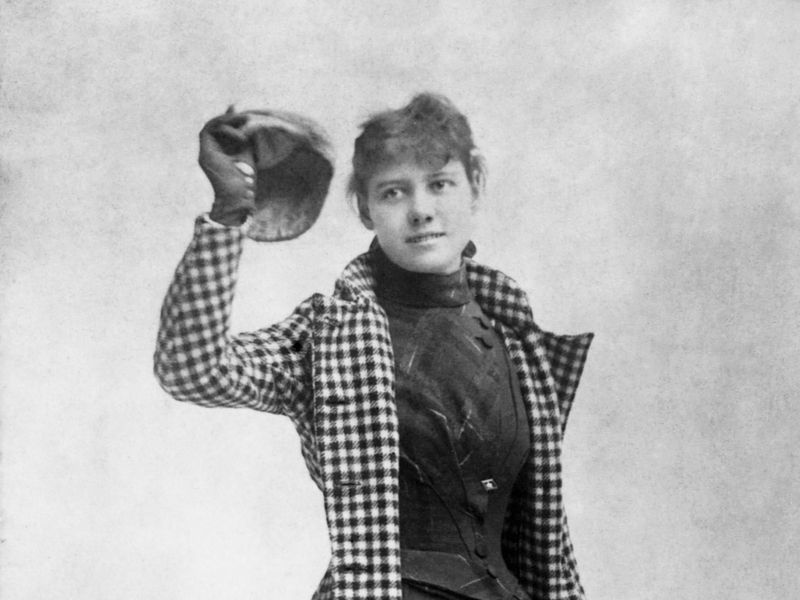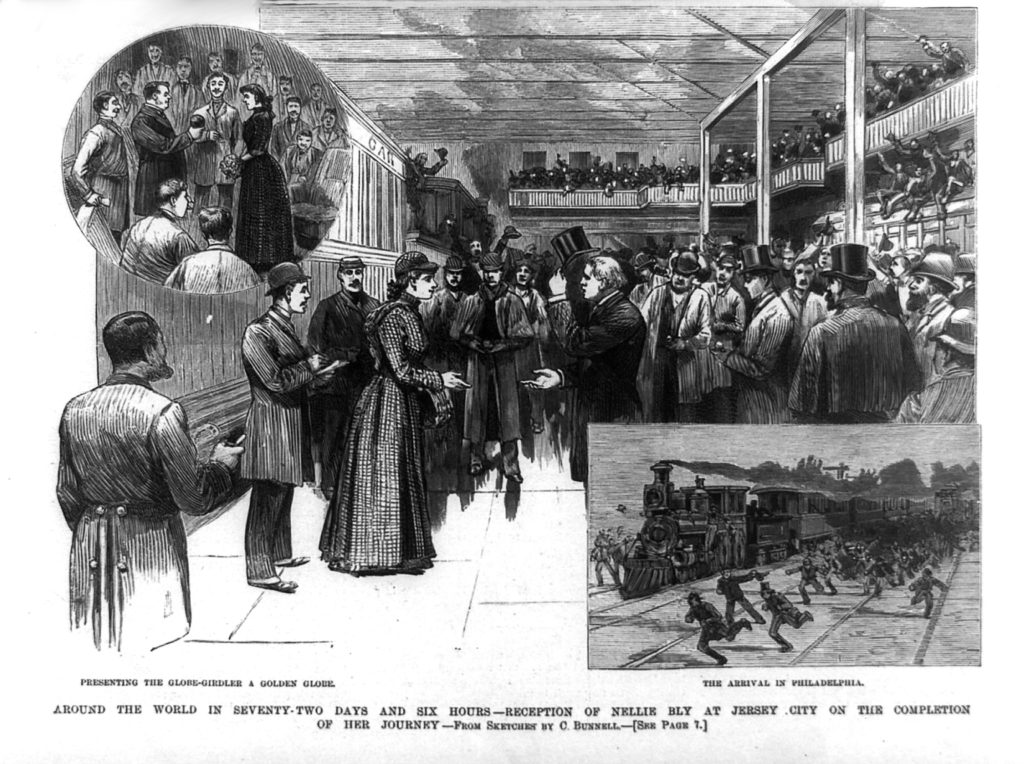On November 14th 1889, two women set out to prove what many thought couldn’t be done: to travel around the world as a solo woman and beat the precedent of 80 days set by Jules Verne’s fictional character Phileas Fogg. For 70 odd days, it was doubtful if they could make it, for despite advances in transportation, steam ship and rail availability was not as prolific as today’s airplane schedules and weather could cause even more delays than in the present day. These two women were both different and similar. It is not known that they ever met. Yet they laid the foundation for female world travel enjoyed by many of us today.

Nellie Bly (pen name for Elizabeth Cochrane) was a thoroughly American girl. Northern in birth and personality, she was plucky, headstrong and daring. Bly made a name for herself as an investigative journalist in New York in the late 1880s. Matthew Goodman’s book, Eighty Days chronicles Nellie’s difficult childhood, her determination to build a career in writing and her curiosity to see the world. She originated the idea of a trip around the world made in less time than Verne’s popular hero. It took many months to convince her editors that such a trip would be interesting to readers and feasible for a woman to complete solo. One concern immediately brought forward was that a woman’s necessary baggage would get in the way of fast transfers. Nellie affirmed that she would only take what she could carry herself in a grip sack, making her the forerunner of female backpackers. She wore one dress, along with a checked full length coat that would become famous when Nellie made her triumphant train journey across the US to end her trip in 72 days.

The morning Nellie Blly was embarking on Atlantic steamship for her round the world trip, Cosmopolitan editor John Brisbane Walker read the story in a paper and immediately thought that someone could possibly beat Bly if traveling in the opposite direction. After mulling this over for a few minutes, Walker realized he had just the woman on his staff – Elizabeth Bisland. Bisland was a southern belle. She was considered exceptionally beautiful, genteel and accomplished. Her family’s post-civil-war poverty had led Elzabeth to leave her plantation home at age 20 and make a career for herself as a writer first in New Orleans and then in New York. After some very persuasive conversation with Bisland, Walker finally convinced her to set out on a round the world trip merely 9 hours after Bly set sail. Bisland boarded a train for the west coast, traveling the opposite direction as Bly. Neither woman had traveled overseas before.

Eighty Days recounts the details of the voyages and rail trips, the countries seen and people met, the scramble to make connections, the varied landscapes and the cultures each woman was able to enjoy, despite spending the majority of the trip in first class cabins aboard steam ships.

Goodman also backs up the story by going into detail about aspects of political and cultural issues of the day. Sometimes these tangents felt a bit excessive and took away from the flow of the story of the journey, but many were very interesting. He also quotes from Bisland’s and Bly’s own reports. It was interesting to follow how each woman’s personality affected what they enjoyed and struggled with during the journey. Nellie was jittery most of the trip, with a single minded pursuit of making it as fast as possible. She begrudged the British their empire and how they controlled the ports of the world. She came home with an intense pride of America and a firm belief that the United States was the greatest country of the world, a sentiment her readers identified with. Elizabth Bisland was an intellectual and lover of literature. Once she got into the flow of travel, she loved visiting the places she had read about in books. She seemed to make friends easily among the aristocrats she met on the steam ships. She fell in love with the Orient, especially Japan. Later she would write about the need for Americans to be more gracious and accommodating when abroad and the gems to be discovered if one opens one’s eyes to what is unique around the world.

Nellie Bly made a triumphant entry into New York on January 25th, 1890, setting a world record for circumnavigating the globe. She was probably the most famous woman in the press that year. Storms on the Atlantic delayed Bisland and she didn’t arrive in New York until January 30th. Rather sadly, Bly’s personality and popularity eclipsed Bisland’s achievement.
Eighty Days goes onto describe how both women dealt with the fame that came to them and the triumphs and struggles of their lives after the famous trip.
Readers will find things about the world of 1889-1890 that are hard to justify and understand, but will also recognize the same humanity and personalities in Bly and Bisland as we know and understand today.
And we can be thankful to them for pioneering female journalism and female world travel.
No links are currently affiliate links. Images are from the public domain.